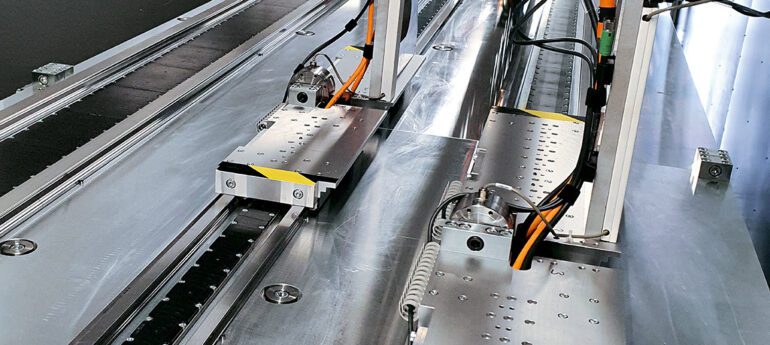TL;DR:
- Beckhoff’s AL8000 linear motors advance with TwinCAT Cogging Compensation software.
- Cogging Compensation addresses magnetic cogging forces for precision tasks.
- Machine learning integrated into TwinCAT automates cogging data collection.
- Neural network training refines the control system’s current pre-control.
- Lag error reduction up to a factor of seven achieved, synchronization up to a factor of five.
- No hardware changes are needed for AL8000 linear motor upgrade.
Main AI News:
In the realm of precision engineering, Beckhoff continues to push boundaries with its AL8000 linear motors. A notable advancement comes in the form of the recently unveiled TwinCAT Cogging Compensation software, a powerful solution that catapults linear motors into a new era of accuracy and synchronization. Industries reliant on impeccable precision, such as milling machines and laser cutting, stand to reap substantial benefits from this innovation.
Central to this breakthrough is the understanding that linear motors often grapple with cogging forces, a result of the intricate interplay between the iron core within the primary component and the steadfast pull of permanent magnets in the secondary part. The consequence of such cogging can prove restrictive, limiting the execution of tasks that demand not just high precision, but impeccable synchronization as well.
Beckhoff’s TwinCAT Cogging Compensation software deftly addresses this conundrum with its ingenious capability to neutralize the impact of cogging forces. At its core, the software achieves this by meticulously accounting for magnetic dynamics and other pivotal mechanical intricacies, which collectively contribute to the cogging phenomenon.
A game-changer in this paradigm is the integration of machine learning seamlessly into TwinCAT. The modus operandi is as follows: The software autonomously captures cogging data essential for its functioning, doing so during a comprehensive reference run along the entirety of the linear motor’s magnetic track. This trove of data serves as the bedrock for the training of a neural network within the software. This sophisticated neural network, in turn, seamlessly amalgamates into the control system, influencing current pre-control operations.
The real-world implications of this software are nothing short of astounding. By tailoring the current pre-control in this adaptive manner, the software effectively mitigates lag errors, resulting in an unprecedented reduction by up to a staggering factor of seven. Furthermore, the synchronization prowess of machines incorporating AL8000 linear motors experiences an enhancement of up to a remarkable factor of five. And all this, mind you, is accomplished sans any necessitated hardware modifications to the AL8000.
Conclusion:
Beckhoff’s AL8000 linear motors, empowered by the TwinCAT Cogging Compensation software and machine learning, set a new industry standard for precision and synchronization. This innovation holds the potential to reshape the market by enabling seamless execution of high-precision tasks and opening doors to enhanced productivity across sectors that rely on exacting motion control.

